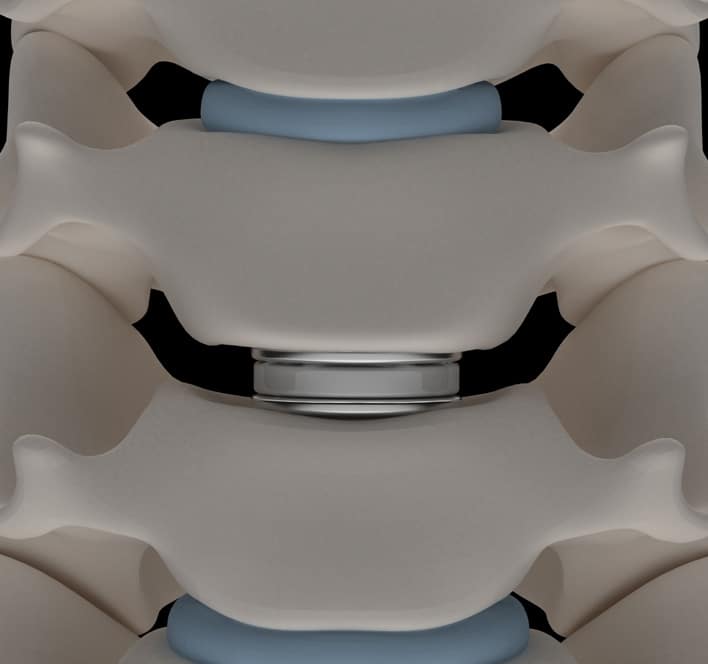Naturally, our bodies experience various changes as we age, and some people, especially those over 60 years old, may get degenerative disc disease. This condition can affect the lower back area or neck region. If it’s affecting the cervical discs, you may experience neck pain that could extend into your hands as well. Typically, this is because one or more cervical discs that cushion your vertebrae have degenerated, causing the spinal cord or nerves to be compressed on the affected area.
Fortunately, with the newer but safe cervical artificial disc replacement (ADR), a surgeon may be able to replace the damaged disc with an artificial one. This might help cure neck pain and other symptoms associated with having a degenerative cervical disc. Nevertheless, before opting for the procedure, it’s vital to learn some of the facts about cervical artificial disc replacement.
4 Important Facts About Cervical Artificial Disc Replacement
Here are 4 facts you need to know about cervical ADR:
1. Cervical Artificial Disc Replacement Is Better Than ACDF
ADR is a relatively new surgical procedure that was approved by the FDA recently. Before then, the only surgical option for treating damaged cervical discs was anterior cervical discectomy and fusion (ACDF). ACDF involves removing the damaged cervical disc in your neck and fusing the adjacent vertebrae to cover the gap. One issue with this procedure is that it tampers with normal neck motion and may increase the degeneration of the adjacent discs, which may require surgery in the future.
On the other hand, cervical artificial disc replacement involves the surgeon removing the affected disc and placing an artificial disc in the gap. In comparison, studies and clinical trials show that ADR leads to fewer complications and a quicker return to normal life. Cervical artificial disc replacement surgery also maintains normal neck motion. Since neck height is also preserved, there is less risk of adjacent risk of developing degenerative disc disease.
2. ADR Surgery May Not Necessarily Need an Inpatient Stay
With the newer, effective, and safer minimally-invasive procedures that have been developed, your disc can be replaced in an outpatient setting, allowing you to go home the same day you’re operated on. Minimally-invasive surgeries involve the surgeon making a minimal surgical incision, meaning less blood loss, pain, and trauma. This advanced procedure has several other benefits, including:
- Faster recovery
- Quick return to work
- Less surgery cost because it can be done in an outpatient setting
- Minimal scarring
After evaluating your condition, your surgeon will advise whether your surgery can be conducted in an outpatient setting.
3. Cervical Artificial Disc Replacement Has Its Risks Too
Like any other surgical or medical procedure, ADR is not without its risk. Though ADR is relatively safe and its benefits mostly outweigh its risks in most people, there is a need to discuss the same with your doctor before the procedure.
Essentially, the long-term outcomes of ADR are mostly unknown, as the procedure has been around just for a couple of years. Some of the risks may include the following:
- Infection
- Spinal fluid leak
- Nerve injury
- Change in voice
- Stroke
- Failed surgery
Other health conditions the patient has might contribute to these and other risks. That’s why talking with your doctor about your previous treatment, including current medications, is vital before going to the surgery room.
It’s also important to note that several clinical trials and studies have shown over 90% success rate with cervical artificial disk replacement. Therefore, it’s very rare to develop a major complication.
4. 2-Level Cervical Artificial Disc Replacement is Possible
In some patients, the degenerative disc disease may affect two or more cervical discs. Luckily, the FDA approved 2-level consecutive disk replacement surgery using approved artificial discs. Talk to your doctor if you have multiple disc damages to see whether you may qualify for this type of surgery.
Consult a Qualified Specialist Today at NJ Spine & Orthopedic
Though cervical artificial disc replacement is relatively new, its effectiveness is backed by data and many patients’ testimonials of relieved neck and arm pain. Therefore, if other conservative treatment methods have failed to relieve your degenerative disc disease symptoms, ADR surgery might be the solution.
At NJ Spine & Orthopedic, we’re experts in minimally-invasive surgeries, helping dozens of patients in New Jersey, New York, and Florida recover from various conditions. Our Concierge Team can help you with every aspect of your appointment, and our caring patient advocates can answer any questions you may have.
If you or a loved one is experiencing chronic neck pain that extends to the arms, you may be suffering from cervical disc degenerative disease. Call us at (866) 553-0612 or fill out this form to book a free consultation with one of the most-sought surgeons in the country.

